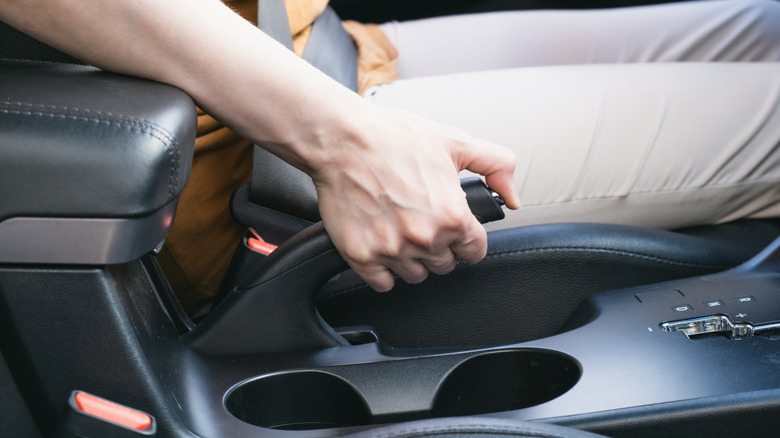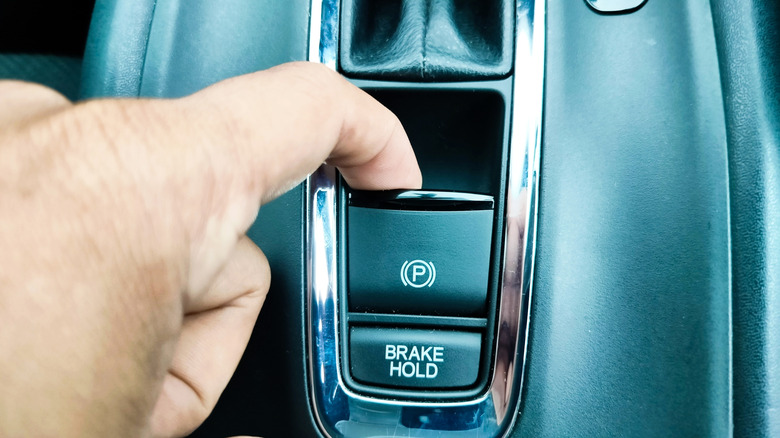Why Don't New Cars Have Physical Handbrake Levers Any More?
If you've been driving cars for long enough, you're probably used to the idea of a physical handbrake located under the gear shifter. This was the dominant format for many decades, and a vital means of keeping your vehicle firmly parked, not to mention stopping in an emergency like your normal brakes malfunctioning. Failing to engage the parking brake can do quite a bit of harm to your car's longevity. However, in recent years, those long levers have gradually started making way for a new framework: electronic parking brakes, or EPBs.
Rather than the large lever you might be used to, an EPB takes the form of a small dip switch in the same spot on the console, no bigger than the switch you use to raise and lower your windows. When the switch is pressed, electronic motors activate, pressing braking pads into your rear brakes. Despite the inclusion of an electronic component, the general effect of an EPB is exactly the same as a physical handbrake lever. The only real difference is that you can't use them to pull off exaggerated turns like you would with a physical lever.
EPBs have almost completely conquered the automotive sphere. According to a study conducted by CarGurus in 2024, only around 8% of new cars released in the U.K. that year still used physical handbrake levers. It may be a small, debatably unnecessary element in the grand scheme of your driving experience, but it's still fair to wonder how this came about. The primary reasons are improved spacing on and below the driver console and general ease of use for drivers.
EPBs are smaller and more convenient
There are two major factors that make EPBs more attractive than traditional handbrakes to automotive manufacturers. The first is their relative size — obviously, a little switch on the console is much, much smaller than a massive, jutting lever. Installing an EPB makes it easier to fit more features and functions into the sizable area that the lever would normally take up. In addition to that, since an EPB activates the brake pads electronically, you don't need to worry about funneling brake lines from it to the rear wheels like you do with a handbrake lever. This helps to streamline car designs a bit.
On a more practical level, EPBs are also just easier to engage or disengage than a traditional lever. You don't need to put any force into it either way; just tap the switch, and you're good. And since an EPB is electronic, that also grants it additional convenient features, such as automatically disengaging when the car is shifted out of park or automatically engaging when the car is turned off. It's just a little bit of effort a driver can save themselves, and when you add that to the design perks, it's a win-win for both companies and consumers.

